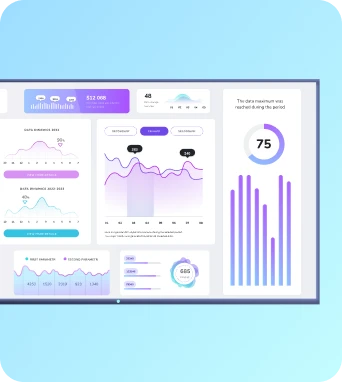BenQ smart signage displays
BenQ smart signage displays are commercial-grade digital screens built for continuous operation in public and corporate spaces. They combine robust hardware, high-brightness panels, integrated media players and network management features to deliver reliable, easy-to-deploy solutions for retail, education, hospitality and workplace dashboards.
BenQ smart signage displays
Hardware features and display technologies
BenQ smart signage displays are built around commercial-grade components that support long hours of operation and sustained performance. Panels often use IPS or VA technologies to provide wide viewing angles and stable colour across large-format screens, while high-brightness options mitigate ambient light issues in open-plan or window-adjacent locations. Anti-glare coatings, tempered glass and ruggedised enclosures reduce physical wear and improve readability in public environments. Commercial panels also differ from consumer TVs in heat management: reinforced cooling and motion-sparing firmware extend lifespan during 16/7 or 24/7 usage scenarios. For deployments that require tactile interaction, BenQ’s interactive series adds touch sensors, pen recognition and multi-touch capability with durable glass surfaces rated for frequent use. The connectivity and internal processing options simplify integration with networked signage platforms. Many BenQ models include built-in Android or proprietary media players capable of running local apps and rendering HTML5 content, reducing dependency on external players. Standardised inputs such as HDMI, DisplayPort, USB and RS-232 allow connection to PCs, players and sensors; optional OPS slots accept modular PCs for Windows-based signage applications. For IT teams managing fleets, features like remote power control, automatic on/off scheduling, and centralised firmware updates lower maintenance overhead. Security features include locked input panels and tamper-resistant mounts to prevent unauthorised access. When selecting a model for a Fugo.ai deployment, prioritise compatibility with the platform’s playback requirements, desired resolution and whether touch or high-brightness performance is necessary for the intended environment.
Deployment, network management and content workflows
Deploying BenQ smart signage displays at scale demands a clear plan for mounting, network access and device provisioning. Wall and ceiling mounts, portrait or landscape orientations and video-wall frames must be chosen to match site constraints and viewing distances. For multi-site rollouts, create a standardised kit that includes the chosen BenQ model, mounts, cabling and any required OPS modules or external players; standardisation simplifies spare part management and speeds troubleshooting. Network connectivity options typically include wired Ethernet for reliability and often optional Wi-Fi for temporary or hard-to-wire locations. When running dashboards or live data feeds, wired connections reduce latency and improve stability for real-time metrics. On the management side, BenQ devices support remote monitoring via SNMP or vendor-specific device management systems, and can be integrated with cloud signage platforms like Fugo.ai to handle content scheduling, playback status and remote restarts. Use VLANs and network access control to segment signage traffic and protect both device management interfaces and the broader corporate network. Implement centralised logging and health checks to detect issues such as content failures, offline displays or playback errors; proactive alerts allow site teams to intervene before dashboards show stale information. For security-conscious environments, enable secure boot and restrict physical ports, and ensure firmware is kept current to close known vulnerabilities. Workflow considerations include templating layouts for dashboards, setting time-based playlists for lobby and breakroom screens, and using device groups in Fugo to target specific locations with relevant KPI widgets and localised messaging.
Operational considerations and best practices
Keep the learning going...
Bandwidth-efficient streaming
Bandwidth-efficient streaming is an approach to delivering video and visual content that minimises network load while preserving perceived quality. It uses adaptive bitrate encoding, intelligent caching, local playback and smart delivery strategies to reduce bandwidth consumption on digital signage networks while keeping playback smooth and predictable.
Beacon-triggered ads
Beacon-triggered ads are location-aware digital signage messages activated by nearby Bluetooth Low Energy (BLE) beacons. They deliver timely, contextual promotions or information to TV dashboards and displays, enabling zone-based targeting and moment-specific content changes for retail, hospitality, workplace and event environments managed via Fugo.ai.
Bezel
A bezel is the border or frame that surrounds a display panel. In digital signage it determines visible screen area, aesthetic finish and the gap between adjacent screens. Bezel size and design affect mounting, the perceived continuity of multiscreen layouts and content alignment strategies for video walls and tiled displays.



